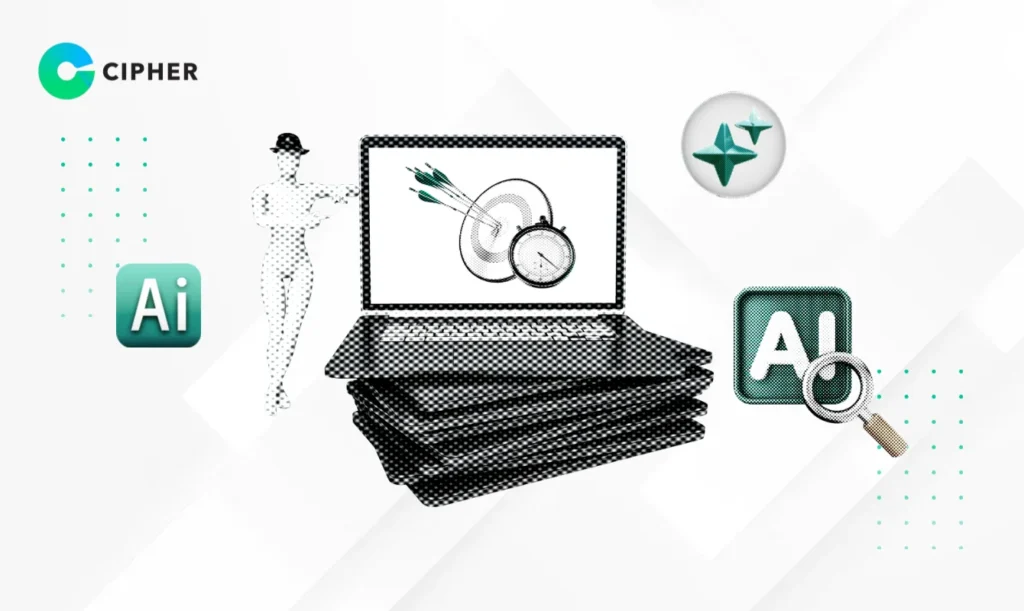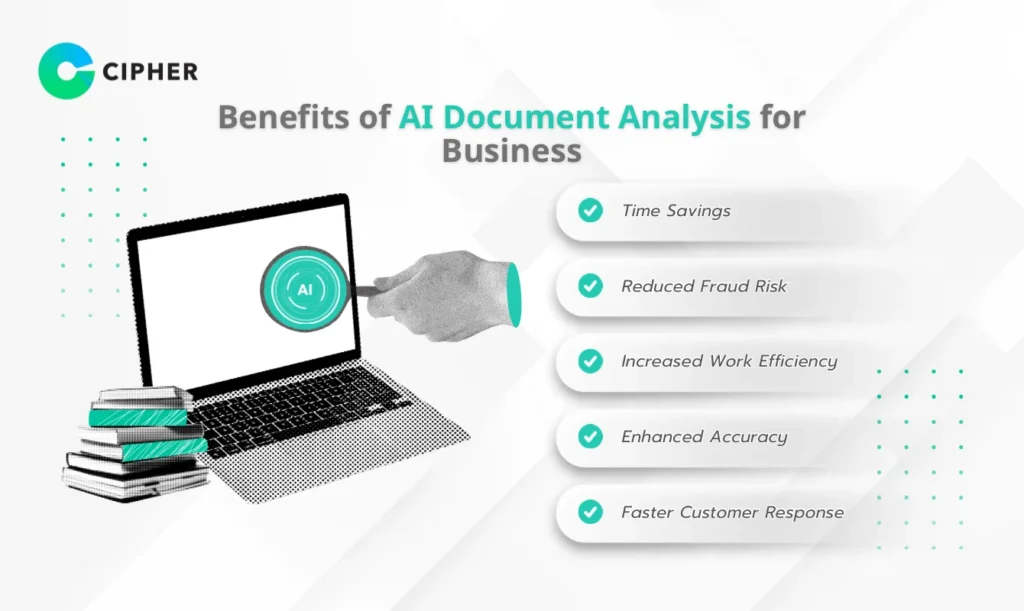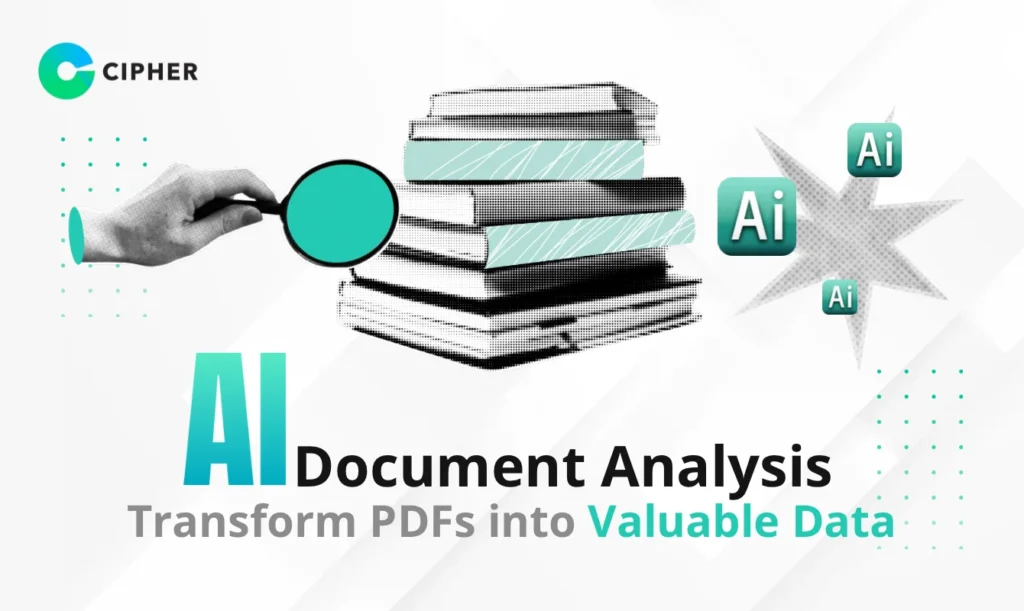Data is an organization’s most valuable treasure, yet many companies find themselves drowning in documents that are difficult to manage. If you have thousands of PDF files to search through for critical information, or thick reports to summarize under tight deadlines, it can be extremely challenging. Despite technological advancements, many organizations still spend countless hours manually analyzing documents—a process that is not only tedious and time-consuming but also prone to errors and inconsistencies.
This is where AI Document Analysis (Document AI) comes in to transform our workflow, turning mountains of documents into readily available data treasures. This is part of the trend of enhancing efficiency with AI that is changing how businesses operate worldwide.
Table of Contents
What is AI Document Analysis? How Does it Work?

AI Document Analysis is a technology that uses artificial intelligence to automatically manage various documents through multiple techniques such as Machine Learning, Natural Language Processing (NLP), and Computer Vision working together. This technology allows you to analyze large volumes of documents in a short time, which would take hours or days if done manually. CIPHER’s software development team can develop systems that efficiently leverage this technology.
For example, banks must process millions of documents every day, including loan applications, contracts, invoices, and more. Analyzing all these manually would take an enormous amount of time, have a high probability of errors, and consume vast resources. With Document AI, banks can quickly and accurately find specific information from these documents.
Core Technologies Behind AI Document Analysis
Converting Data for Computer Reading with OCR
Natural Language Processing (NLP)
NLP is the technology that enables computers to understand human language. In document analysis, NLP helps systems extract important information, understand context, and interpret content. This allows organizations to categorize documents, extract relevant data, and analyze documents more deeply than traditional keyword searches. This technology uses principles similar to those used in AI Chatbots, which can understand and respond to user questions naturally.
AI Document Summarization
Automatic Language Translation
Automatic Document Classification
Sentiment Analysis
For documents related to opinions, such as customer reviews or satisfaction surveys, AI can analyze emotions and attitudes in the text, helping businesses better understand customer feelings, identify problems, and improve services accordingly. This is an important part of Digital Marketing in the digital age.
Automated Data Extraction
How to Use AI PDF Reader and Workflow
How to Use AI PDF Reader is not as complicated as you might think. Generally, there are these main steps:
- Document Import: Upload the documents you want to analyze into the system
- Recognition and Classification: OCR identifies document types and categorizes them
- Analysis and Data Extraction: NLP examines, interprets, and extracts important information
- Processing and Verification: AI identifies data relationships and verifies accuracy
- Display: Presents the analyzed data in the format required by the user
Understanding these steps will help you use AI to read PDFs with maximum efficiency. Our software development team can help design and develop systems tailored to your organization’s needs.
Benefits of AI Document Analysis for Business

Time Savings
Reduced Fraud Risk
Increased Work Efficiency
When employees don’t have to spend time on repetitive and boring document processing tasks, they have more time and energy for creative and high-skill work, resulting in improved overall organizational efficiency. Additionally, AI can serve as an AI work assistant that supports and works efficiently alongside employees.
Enhanced Accuracy
Faster Customer Response
Unstructured Document Data Analysis: Challenges and Solutions
Unstructured Document Data Analysis is a significant challenge for organizations because this data is not stored in structured tables or databases.
Unstructured Data refers to data without a predefined format or structure, such as emails, reports, articles, social media posts, images, audio, and video. This type of data accounts for 80-90% of all data in organizations but is the most difficult to analyze. The challenges in analyzing Unstructured Data include:
- Variety of Formats: Each document type has a different format, making it difficult to create a single analysis system that works for all types
- assive Data Volume: Organizations often have many documents to process
- Language Complexity: Human language has ambiguities, words with multiple meanings, and nuances that need contextual interpretation
- Lack of Clear Structure: There is no fixed pattern for storing data
However, AI Document Analysis has several tools to address these issues:
- Combining Multiple Technologies: Using OCR, NLP, and Machine Learning together to convert and analyze unstructured data
- Deep Learning: Modern AI models can learn complex patterns in unstructured data
- Advanced Natural Language Processing: Helps AI understand context, meaning, and relationships in documents
- Cloud Storage and Processing: Supports processing massive amounts of data
With these technologies, organizations can transform Unstructured Data into valuable, usable information.
Case Studies: Using AI Document Analysis in Various Industries
Banking and Finance
Legal Business
Human Resources
HR departments use AI to screen applicant resumes, manage new employee onboarding documents, and automatically extract information from various forms, reducing data entry time and improving document management accuracy.
Government Agencies
Insurance Business
Healthcare Business
Notable AI Document Analysis Tools Today
Google Document AI
DocuSign Insight
Super.AI
Amazon Textract
UPDF AI
Kofax Transformation
How to Choose the Right AI Document Analysis Tool for Your Organization
1. Define Your Organization's Specific Needs
2. Check Technical Compatibility
3. Consider Ease of Use
4. Prioritize Data Security
5. Look for Advanced Capabilities
6. Check Performance and Reliability
7. Consider Scalability
AI Document Analysis Services from CIPHER: Enhancing Document Management Efficiency for Thai Businesses
CIPHER has extensive experience in software development for leading companies in both government and private sectors. We understand the different needs of each organization and are ready to offer AI Document Analysis solutions that truly meet Thai business needs.
AI Document Analysis Systems Designed Specifically for Your Business
Full Thai Language Support
Comprehensive Services from Analysis to Implementation
Save Both Time and Budget
Seamless Integration with Existing Systems
Conclusion
Efficiently managing numerous documents is essential for every organization. Implementing AI Document Analysis in your organization helps reduce work steps with its ability to read, search, summarize, and analyze vast amounts of documents. Document AI technology saves time, reduces costs, and increases work efficiency, giving your employees more time to develop other strategies.
Whether your organization is small or large, CIPHER is ready to help you become a truly data-driven organization with AI for Business solutions that meet your specific needs.
Transform your mountain of PDF documents into a data treasure that creates value for your business today!
Frequently Asked Questions
Which businesses is AI Document Analysis suitable for?
AI Document Analysis is beneficial in various businesses, such as:
- Legal Business: Analyzing contracts, case documents, and legal research
- Human Resources: Screening applicant profiles, managing employee documents, and onboarding new employees
- Finance and Banking: Helping analyze loan applications, contracts, and financial documents
- Government Agencies: Processing numerous documents, such as tax filings and grant applications
- Insurance Business: Improving claim management, underwriting, and risk assessment
- Healthcare Business: Managing patient records, insurance claims, and medical documents
How to Use AI PDF Reader Most Effectively?
To use AI PDF Reader most effectively, follow these tips:
- Use a high-quality scanner to get clear PDF files
- Check that PDF files aren’t protected or locked
- Choose AI tools that support the languages used in the documents
- Clean and format documents clearly before analysis
- Use AI systems that can also recognize tables, graphs, and images
- Check results and adjust settings as appropriate
How accurate is AI Document Analysis?
How should organizations start using AI Document Analysis?
For organizations interested in implementing AI Document Analysis, we recommend starting with:
- Clearly identify needs and problems you want to solve
- Understand your current document management processes
- Study various solutions in the market and choose one that meets your needs
- Start with a small pilot project to test effectiveness
- Collect data and measure results to improve usage
- Expand usage to other parts of the organization as appropriate





